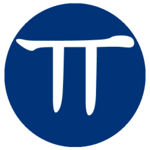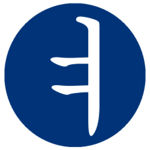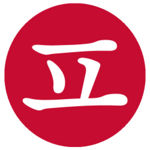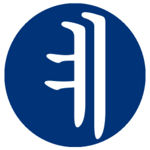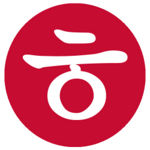Difference between revisions of "Hangeul step 4/es"
DigitalSoju (Talk | contribs) m |
|||
| Line 3: | Line 3: | ||
{| border=0 style="text-align:center; margin-left: auto; margin-right: auto;" | {| border=0 style="text-align:center; margin-left: auto; margin-right: auto;" | ||
|- | |- | ||
| − | | [[File:Back.png|150px|link=Hangeul step 3b]] | + | | [[File:Back.png|150px|link=Hangeul step 3b/es]] |
| − | | [[File:Next.png|150px|link=Hangeul step 4b]] | + | | [[File:Next.png|150px|link=Hangeul step 4b/es]] |
|} | |} | ||
| Line 385: | Line 385: | ||
{| border=0 style="text-align:center; margin-left: auto; margin-right: auto;" | {| border=0 style="text-align:center; margin-left: auto; margin-right: auto;" | ||
|- | |- | ||
| − | | [[File:Back.png|link=Hangeul step 3b|150px]] | + | | [[File:Back.png|link=Hangeul step 3b/es|150px]] |
| − | | [[File:Next.png|link=Hangeul step 4b|150px]] | + | | [[File:Next.png|link=Hangeul step 4b/es|150px]] |
|} | |} | ||
Revision as of 03:57, 24 June 2010
|
|
|
| Ayuda · Chuleta · Portal de la Comunidad |

|

|
Contents
Consonantes Aspiradas
En esta sección vamos a aprender las consonantes aspiradas ㅋ, ㅌ, ㅊ, ㅎ y ㅍ. Mira la imagen de la derecha, ¿ves el parecido entre las letras que ya hemos aprendido en la línea de arriba y la línea de abajo?
Antes de seguir adelante vamos a lo que significa aspiración. La aspiración consiste en dejar salir el aire cuando pronuncias una letra. Para ver la diferencia entre una letra aspirada y una no aspirada puedes situar una hoja de papel frente a la boca y pronunciar la letra. Si el papel se mueve es un sonido aspirado y si no se mueve es un sonido no aspirado. Puedes encontrar una similitud en el inglés.
Las nuevas letras que vamos ha aprender son la versión aspirada de las letras que habiamos aprendido. Se pronuncian igual que las pero soltando más aire. Si te has fijado, para escribir estas letras simplemente hay que añadir un trazo más.
- Fuente: Wikipedia:Aspiration_(phonetics)
Y sound vowels
Las vocales que vamos a aprender son ㅑ, ㅕ, ㅛ, ㅠ, ㅖ y ㅒ. Fíjate en la imagen de la derecha. ¿Ves el parecido entre las vocales que ya aprendimos (línea superior) y la línea inferior? Simplemente hay que añadir una /i/ delante de la vocal ya aprendida. De esta manera formamos diptongos que empiezan por /i/ como "ia", "ie", "io", "iu", etc... Por ejemplo, en secciones anteriores aprendimos la ㅜ ("u"), si añadimos la "i" delante formamos "iu" ㅠ como en "ciudad".
ㅅ reminder
Remember in step 3 we mentioned that ㅅ when combined with the vowels ㅣ, ㅕ, ㅑ, ㅠ, ㅛ it is pronounced like a "sh" sound. It is an "sh" sound anytime it combines with these double stroked vowels and the vowel ㅣ.
Begin lesson
|
| ||||||||||
|
This is pronounced just like ㅗ but with a /y/ sound in front of it. Almost like "yo" in English. For full information about this letter, see ㅛ.
|
This is an aspirated /k/ sound. This is pronounced just like ㄱ but with more air coming out. For full information about this letter, see ㅋ. | ||||||||||
| Practice | |
|---|---|
| 카 | |
| 키 | |
| 코 | |
| 쿄 | |
| 소 | |
| 쇼 | |
|
| ||||||||||
|
This is pronounced just like ㅜ but with a Y sound in front of it. Almost like "you" in English. For full information about this letter, see ㅠ.
|
This is an aspirated /t/ sound. This is pronounced just like ㄷ but with more air coming out. For full information about this letter, see ㅌ. | ||||||||||
| Practice | |
|---|---|
| 투 | |
| 튜 | |
| 수 | |
| 슈 | |
|
| ||||||||||
|
This is pronounced just like ㅓ but with a Y sound in front of it. For full information about this letter, see ㅕ.
|
This is an aspirated /t/ sound. This is pronounced just like ㄷ but with more air emitted from the mouth. For full information about this letter, see ㅍ. | ||||||||||
| Practice | |
|---|---|
| 피 | |
| 표 | |
| 퓨 | |
| 펴 | |
| 겨 | |
| 켜 | |
| 서 | |
| 셔 | |
|
| ||||||||||
|
This is pronounced just like ㅏ but with a Y sound in front of it. For full information about this letter, see ㅑ.
|
This is a /ch/ sound. This is pronounced just like ㅈ but with more air emitted from the mouth. For full information about this letter, see ㅊ. | ||||||||||
| Practice | |
|---|---|
| 지 | |
| 치 | |
| 쳐 | |
| 냐 | |
| 사 | |
| 샤 | |
|
| ||||||||||
|
This is pronounced just like ㅔ but with a /y/ sound in front of it. For full information about this letter, see ㅖ.
|
This is an /h/ sound. For full information about this letter, see ㅎ. | ||||||||||
| Practice | |
|---|---|
| 히 | |
| 호 | |
| 효 | |
| 휴 | |
| 혜 | |
| 계 | |
| ||||
|
This is pronounced just like ㅐ but with a /y/ sound in front of it (not much differently than ㅖ) For full information about this letter, see ㅒ.
| ||||
| Practice | |
|---|---|
| 걔 | |
| 쟤 | |
Real Examples
Practice with these real Korean words. The examples for step4 have been split. Half of the examples for step 4 are here and half are on the next page.
| Word | Audio |
|---|---|
| 가르치다 (to teach) | |
| 가리키다 (to point at) | |
| 가치 (value) | |
| 고추 (hot pepper) | |
| 고프다 (to be hungry) | |
| 교수 (professor) | |
| 구타 (beating) | |
| 구토 (vomiting) | |
| 구치소 (prison) | |
| 구하다 (to rescue) | |
| 구호 (a slogan) | |
| 기계 (machine) | |
| 기타 (guitar) | |
| 기차 (train) | |
| 기차표 (railroad ticket) | |
| 기체 (gas, vapor) | |
| 기초 (basis) | |
| 기호 (symbol) | |
| 나타나다 (to appear) | |
| 노예 (slave) | |
| 노크 (knock) | |
| 노처녀 (maiden lady) | |
| 니트 (knitwear) | |
| 다치다 (to get hurt) | |
| 대여 (a loan) | |
| 도토리 (acorn) | |
| 도표 (chart, diagram) | |
| 마치다 (to finish) | |
| 매표소 (ticket office) | |
| 며느리 (daughter-in-law) | |
| 모피 (fur) | |
| 묘지 (grave) | |
| 미치다 (to be crazy) | |
| 바코드 (bar code) | |
| 배터리 (battery) | |
| 배추 (Chinese cabbage) | |
| 벼 (rice plant) | |
| 부여하다 (to bless someone) | |
| 부케 (bouquet) | |
| 보드카 (vodka) | |
| 보호하다 (to protect) | |
| 비키니 (bikini) | |
| 비키다 (to move aside) |

|

|




